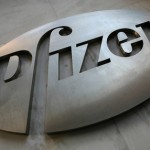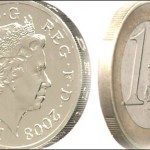Copper swung between gains and losses on Thursday after minutes from FOMCs October meeting revealed policy makers might scale back Fed’s monthly bond purchases in the coming months, reducing the industrial metals demand outlook. A fourth consecutive monthly expansion of Chinas manufacturing sector and factory output in the Euro zone hitting a 29-month high however brought back the metal to positive daily territory.
On the Comex division of the New York Mercantile Exchange, copper futures for settlement in December traded at $3.164 per pound at 10:55 GMT, up 0.14% on the day. Prices held in range between days low of $3.143 and session high at $3.171 a pound. The industrial metal fell by nearly 0.3% on Wednesday but trimmed its weekly decline to little over 0.2% on Thursday.
Futures were pinned down earlier in the day after minutes from FOMC’s October meeting revealed the Federal Reserve might begin trimming its quantitative easing program “in the coming months”, if the economic recovery moves in the desired direction. Yesterday’s Fed minutes showed that policy makers “generally expected that the data would prove consistent with the committee’s outlook for ongoing improvement in labor market conditions and would thus warrant trimming the pace of purchases in coming months.”
A deceleration of Feds quantitative easing program would reduce the amount of money flowing in the economy, strengthening the U.S. dollar and limiting demand for alternative investments.
The metal was pressured on Monday after the National Association of Home Builders reported that its NAHB/Wells Fargo Housing Market Index remained unchanged at 54 in November after October’s reading received a downward revision. The reading mismatched an expected rise to 55.0 according to a Bloomberg survey, curbing the industrial metal’s demand prospects.
A report by the National Association of Realtors showed on Wednesday that sales of previously-owned homes in the U.S. dropped by 3.2% last month to 5.12 million from 5.29 million in September, the fewest sold in since June. This reduced coppers demand prospects, being used as a conductor and building material.
Manufacturing data
The metal however drew some support after a preliminary private report by HSBC and Markit Economics showed Chinas manufacturing sector expanded in November, despite trailing projections and falling to a two-month low. The Asian country accounts for around 40% of global consumption, making it the worlds largest consumer.
The HSBC Flash China Manufacturing PMI fell to 50.4, down from October’s final reading of 50.9 and below analysts’ expectations to post at 50.8. However, the index remained above the neutral level of 50, which draws the line between expansion and contraction in the sector, for a fourth consecutive month.
Hongbin Qu, Chief Economist, China & Co-Head of Asian Economic Research at HSBC commented on the report: “China’s growth momentum softened a little in November, as the HSBC Flash China Manufacturing PMI moderated due to the weak new export orders and slowing pace of restocking activities. That said, this is still the second-highest PMI reading in seven months. The muted inflationary pressures should enable Beijing to keep policy relatively accommodative to support growth.”
Also fanning positive sentiment, manufacturing activity in the Euro zone rose at the fastest pace in 29 months, marking a fifth consecutive monthly advance. The Markit Flash Eurozone PMI jumped to 51.5 in November and met projections, posting an advance from Octobers 51.3. Growth of manufacturing new orders rose by the most since August as new export orders marked the biggest increase since May 2011.
Trends varied by country, the report noted. Germanys advance manufacturing PMI rose to a 2-1/2-year high of 54.5, exceeding expectations for a minor increase by 0.1% from Octobers final reading of 52.9. The leading EU economys upbeat reading came after Frances manufacturing activity dropped to a 6-month low of 47.8. Analysts expected a modest gain to 49.5, near the neutral level, from Octobers reading of 49.1.
Chris Williamson, Chief Economist at Markit commented on the report: “Any improvements were largely confined to Germany, where the PMI has notched up the best growth since mid-2011 so far in the fourth quarter, signalling a 0.5% increase in GDP. France, on the other hand, showed further signs of being the „sick man of Europe‟ with output showing a renewed decline and raising the risk that GDP could fall again in the fourth quarter, constituting a renewed recession. Meanwhile growth outside the „big two‟ slowed to near-stagnation.”





